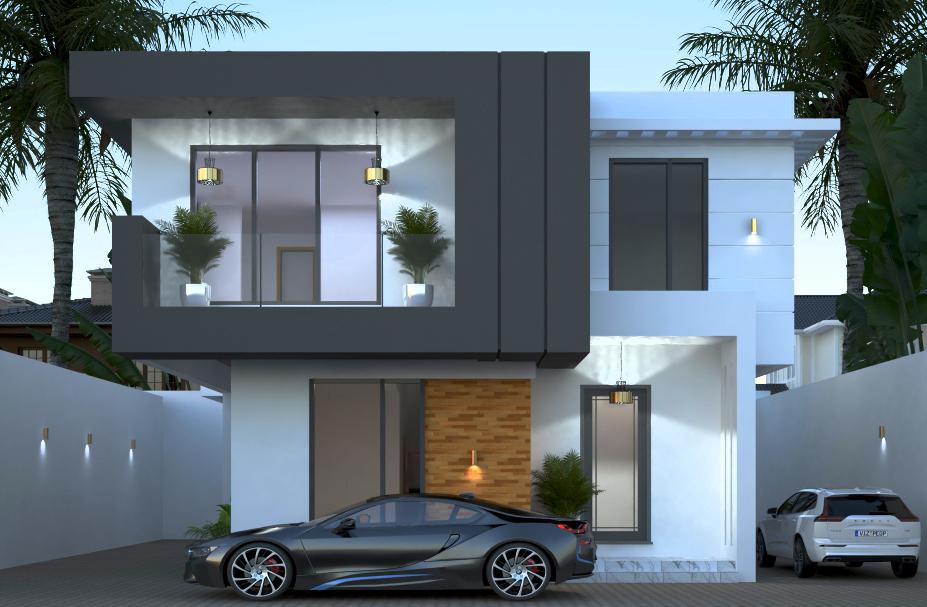
This strategy enables financiers to rapidly increase their realty portfolio with reasonably low financing requirements however with many risks and efforts.
- Key to the BRRRR method is purchasing underestimated residential or commercial properties, renovating them, renting them out, and after that squandering equity and reporting income to purchase more residential or commercial properties.
- The rent that you collect from occupants is utilized to pay your mortgage payments, which ought to turn the residential or commercial property cash-flow positive for the BRRRR technique to work.
What is a BRRRR Method?
The BRRRR method is a realty investment technique that involves acquiring a residential or commercial property, rehabilitating/renovating it, leasing it out, re-financing the loan on the residential or commercial property, and then repeating the procedure with another residential or commercial property. The key to success with this strategy is to acquire residential or commercial properties that can be quickly refurbished and considerably increase in landlord-friendly locations.
The BRRRR Method Meaning
The BRRRR method stands for "buy, rehabilitation, lease, re-finance, and repeat." This technique can be utilized to purchase domestic and commercial residential or commercial properties and can efficiently develop wealth through real estate investing.
This page examines how the BRRRR technique operates in Canada, talks about a few examples of the BRRRR approach in action, and supplies some of the advantages and disadvantages of utilizing this method.
The BRRRR method allows you to buy rental residential or commercial properties without needing a big down payment, but without an excellent plan, it may be a risky method. If you have a good strategy that works, you'll use rental residential or commercial property mortgage to start your property financial investment portfolio and pay it off later on by means of the passive rental earnings generated from your BRRRR tasks. The following steps explain the strategy in general, but they do not guarantee success.
1) Buy: Find a residential or commercial property that meets your investment requirements. For the BRRRR technique, you need to look for homes that are undervalued due to the requirement of considerable repair work. Make sure to do your due diligence to ensure the residential or commercial property is a sound financial investment when representing the cost of repair work.
2) Rehab: Once you buy the residential or commercial property, you need to repair and refurbish it. This step is essential to increase the worth of the residential or commercial property and attract occupants for constant passive income.
3) Rent: Once your home is all set, discover renters and begin collecting rent. Ideally, the lease you collect must be more than the mortgage payments and maintenance expenses, allowing you to be capital positive on your BRRRR task.
4) Refinance: Use the rental income and home worth gratitude to re-finance the mortgage. Take out home equity as money to have sufficient funds to fund the next offer.
5) Repeat: Once you have actually finished the BRRRR project, you can repeat the procedure on other residential or commercial properties to grow your portfolio with the cash you cashed out from the refinance.
How Does the BRRRR Method Work?

The BRRRR technique can generate capital and grow your realty portfolio quickly, however it can also be very risky without persistent research and planning. For BRRRR to work, you require to discover residential or commercial properties below market price, refurbish them, and lease them out to generate adequate income to purchase more residential or commercial properties. Here's a comprehensive look at each action of the BRRRR technique.
Buy a BRRRR House
Find a fixer-upper residential or commercial property listed below market price. This is a fundamental part of the procedure as it determines your prospective return on investment. Finding a residential or commercial property that deals with the BRRRR technique needs detailed knowledge of the regional realty market and understanding of how much the repairs would cost. Your goal is to discover a residential or commercial property that costs less than its After Repair Value (ARV) minus the cost of repairs. Experienced financiers target residential or commercial properties with 20%-30% appreciation in value consisting of repairs after completion.
You may consider purchasing a foreclosed residential or commercial properties, power of sales/short sales or homes that need considerable repair work as they may hold a lot of value while priced listed below market. You also need to consider the after repair work value (ARV), which is the residential or commercial property's market price after you repair and remodel it. Compare this to the expense of repair work and restorations, as well as the existing residential or commercial property value or purchase rate, to see if the deal deserves pursuing.
The ARV is necessary because it informs you how much revenue you can possibly make on the residential or commercial property. To find the ARV, you'll require to research recent similar sales in the area to get a price quote of what the residential or commercial property could be worth once it's completed being repaired and renovated. This is understood as doing relative market analysis (CMA). You ought to go for at least 20% to 30% ARV appreciation while representing repairs.
Once you have a basic concept of the residential or commercial property's worth, you can begin to estimate how much it would cost to refurbish it. Seek advice from local professionals and get price quotes for the work that needs to be done. You might think about getting a basic professional if you don't have experience with home repair work and renovations. It's constantly a great concept to get several quotes from professionals before starting any work on a residential or commercial property.
Once you have a basic concept of the ARV and remodelling expenses, you can begin to compute your deal rate. A great general rule is to use 70% of the ARV minus the approximated repair work and remodelling costs. Bear in mind that you'll need to leave room for negotiating. You need to get a mortgage pre-approval before making an offer on a residential or commercial property so you understand exactly just how much you can pay for to spend.
Rehab/Renovate Your BRRRR Home

This action of the BRRRR method can be as easy as painting and fixing small damage or as complex as gutting the residential or commercial property and going back to square one. You can use tools, such as a painting calculator or concrete calculator, to approximate some repair costs. Generally, BRRRR investors recommend to try to find homes that require larger repairs as there is a great deal of value to be generated through sweat equity. Sweat equity is the concept of getting home appreciation and increasing equity by fixing and refurbishing the house yourself. Ensure to follow your plan to avoid overcoming budget plan or make enhancements that won't increase the residential or commercial property's worth.
Forced Appreciation in BRRRR
A large part of BRRRR task is to require gratitude, which suggests repairing and adding functions to your BRRRR home to increase the worth of it. It is easier to do with older residential or commercial properties that require substantial repairs and remodellings. Although it is fairly simple to force gratitude, your objective is to increase the worth by more than the expense of force appreciation.
For BRRRR jobs, renovations are not ideal method to force appreciation as it may lose its value throughout its rental life-span. Instead, BRRRR jobs concentrate on structural repair work that will hold value for much longer. The BRRRR approach requires homes that need large repairs to be effective.
The key to success with a fixer-upper is to require appreciation while keeping expenses low. This means carefully managing the repair work process, setting a budget and staying with it, hiring and managing trustworthy specialists, and getting all the required licenses. The restorations are primarily required for the rental part of the BRRRR task. You must prevent impractical styles and instead focus on clean and long lasting products that will keep your residential or commercial property desirable for a long time.
Rent The BRRRR Home
Once repairs and remodellings are complete, it's time to discover occupants and start gathering rent. For BRRRR to be successful, the lease must cover the mortgage payments and maintenance expenses, leaving you with favorable or break-even cash flow monthly. The repair work and remodellings on the residential or commercial property may help you charge a higher rent. If you have the ability to increase the lease gathered on your residential or commercial property, you can also increase its worth through "lease gratitude".
Rent gratitude is another way that your residential or commercial property worth can increase, and it's based upon the residential or commercial property's capitalization rate (cap rate). By increasing the lease collected, you'll increase the residential or commercial property's cap rate. A greater cap rate increases the amount an investor or purchaser would want to spend for the residential or commercial property.
Renting the BRRRR home to tenants implies that you'll require to be a landlord, which comes with different duties and duties. This might include preserving the residential or commercial property, paying for proprietor insurance coverage, handling renters, gathering rent, and dealing with evictions. For a more hands-off method, you can work with a residential or commercial property supervisor to take care of the renting side for you.

Refinance The BRRRR Home
Once your residential or commercial property is leased and is making a constant stream of rental income, you can then refinance the residential or commercial property in order to get squander of your home equity. You can get a mortgage with a standard lender, such as a bank, or with a private mortgage lending institution. Pulling out your equity with a refinance is known as a cash-out refinance.
In order for the cash-out refinance to be authorized, you'll need to have adequate equity and earnings. This is why ARV gratitude and adequate rental earnings is so crucial. Most loan providers will only enable you to refinance as much as 75% to 80% of your home's worth. Since this value is based on the fixed and refurbished home's worth, you will have equity simply from sprucing up the home.
Lenders will need to validate your income in order to permit you to re-finance your mortgage. Some major banks may not accept the entire amount of your rental earnings as part of your application. For example, it's typical for banks to just consider 50% of your rental income. B-lenders and private lenders can be more lax and might think about a higher percentage. For homes with 1-4 rental systems, the CMHC has specific guidelines when determining rental earnings. This differs from the 50% gross rental earnings method for specific 2-unit owner-occupied and 2-4 unit non-owner occupied residential or commercial properties, to the net rental income method for other rental residential or commercial property types.
Repeat The BRRRR Method
If your BRRRR project achieves success, you should have sufficient money and adequate rental earnings to get a mortgage on another residential or commercial property. You ought to be mindful getting more residential or commercial properties aggressively because your financial obligation commitments increase rapidly as you get brand-new residential or commercial properties. It may be fairly easy to manage mortgage payments on a single home, however you might discover yourself in a tight spot if you can not manage financial obligation responsibilities on multiple residential or commercial properties at as soon as.
You should always be conservative when considering the BRRRR technique as it is risky and might leave you with a great deal of debt in high-interest environments, or in markets with low rental demand and falling home prices.
Risks of the BRRRR Method
BRRRR financial investments are dangerous and may not fit conservative or unskilled real estate investors. There are a number of factors why the BRRRR approach is not perfect for everyone. Here are five primary risks of the BRRRR technique:

1) Over-leveraging: Since you are refinancing in order to acquire another residential or commercial property, you have little space in case something fails. A drop in home rates might leave your mortgage undersea, and reducing rents or non-payment of rent can cause issues that have a domino result on your financial resources. The BRRRR approach involves a top-level of threat through the quantity of financial obligation that you will be taking on.
2) Lack of Liquidity: You need a substantial quantity of money to acquire a home, fund the repair work and cover unforeseen expenses. You require to pay these expenses upfront without rental income to cover them during the purchase and renovation durations. This binds your money till you have the ability to re-finance or offer the residential or commercial property. You may likewise be forced to sell throughout a real estate market slump with lower prices.
3) Bad Residential Or Commercial Property Market: You require to find a residential or commercial property for below market price that has capacity. In strong sellers markets, it might be tough to find a home with rate that makes sense for the BRRRR task. At finest, it might take a great deal of time to discover a home, and at worst, your BRRRR will not be successful due to high rates. Besides the value you might pocket from flipping the residential or commercial property, you will wish to make certain that it's preferable enough to be leased out to tenants.
4) Large Time Investment: Searching for underestimated residential or commercial properties, handling repairs and restorations, finding and handling tenants, and then dealing with refinancing takes a great deal of time. There are a great deal of moving parts to the BRRRR technique that will keep you included in the project till it is completed. This can become difficult to manage when you have multiple residential or commercial properties or other dedications to look after.
5) Lack of Experience: The BRRRR technique is not for unskilled investors. You need to be able to analyze the market, lay out the repair work needed, find the very best contractors for the job and have a clear understanding on how to fund the entire task. This takes practice and needs experience in the realty industry.
Example of the BRRRR Method
Let's say that you're new to the BRRRR method and you have actually found a home that you think would be a great fixer-upper. It requires substantial repair work that you believe will cost $50,000, but you think the after repair work worth (ARV) of the home is $700,000. Following the 70% rule, you use to buy the home for $500,000. If you were to purchase this home, here are the steps that you would follow:

1) Purchase: You make a 20% down payment of $100,000 to purchase the home. When representing closing expenses of purchasing a home, this includes another $5,000.
2) Repairs: The expense of repair work is $50,000. You can either spend for these expense or get a home remodelling loan. This might consist of credit lines, individual loans, store funding, and even charge card. The interest on these loans will end up being an extra expenditure.
3) Rent: You find an occupant who is willing to pay $2,000 monthly in rent. After representing the expense of a residential or commercial property supervisor and possible job losses, as well as costs such as residential or commercial property tax, insurance, and maintenance, your monthly net rental earnings is $1,500.
4) Refinance: You have actually trouble being approved for a cash-out refinance from a bank, so as an alternative mortgage choice, you select to go with a subprime mortgage lender instead. The existing market worth of the residential or commercial property is $700,000, and the lender is allowing you to cash-out re-finance up to an optimum LTV of 80%, or $560,000.
Disclaimer:
- Any analysis or commentary reflects the viewpoints of WOWA.ca experts and ought to not be considered monetary suggestions. Please consult a certified expert before making any choices.
- The calculators and content on this page are for basic information only. WOWA does not ensure the precision and is not responsible for any repercussions of utilizing the calculator.
- Financial institutions and brokerages may compensate us for connecting customers to them through payments for ads, clicks, and leads.
- Rate of interest are sourced from financial institutions' sites or provided to us straight. Property information is sourced from the Canadian Real Estate Association (CREA) and regional boards' sites and documents.






